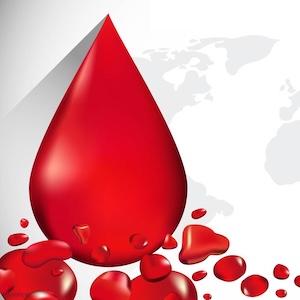Proceedings of the 12th International Conference on Thrombosis and Hemostasis Issues in Cancer, 2024
Vol. 3 No. s1 (2024)
Cancer-associated ischemic stroke: current knowledge and future directions

Publisher's note
All claims expressed in this article are solely those of the authors and do not necessarily represent those of their affiliated organizations, or those of the publisher, the editors and the reviewers. Any product that may be evaluated in this article or claim that may be made by its manufacturer is not guaranteed or endorsed by the publisher.
All claims expressed in this article are solely those of the authors and do not necessarily represent those of their affiliated organizations, or those of the publisher, the editors and the reviewers. Any product that may be evaluated in this article or claim that may be made by its manufacturer is not guaranteed or endorsed by the publisher.
Received: 16 January 2024
Accepted: 4 March 2024
Accepted: 4 March 2024
2302
Views
699
Downloads
Similar Articles
- Alice Lipari, Esmeralda Capristo, Antonietta Ferretti, Erica De Candia, Anticoagulation in obese patients: challenges and strategies , Bleeding, Thrombosis and Vascular Biology: Vol. 4 No. 3 (2025)
- Roger Lijnen, Désiré Collen, The key to fibrinolysis and thrombolysis , Bleeding, Thrombosis and Vascular Biology: Vol. 4 No. 3 (2025)
- Gary E. Raskob, Risk of recurrent venous thromboembolism in cancer patients after discontinuation of anticoagulant therapy , Bleeding, Thrombosis and Vascular Biology: Vol. 3 No. s1 (2024)
- Stefania Cavazza, Gualtiero Palareti*, Still unmet problems with low molecular weight heparin prophylaxis of venous thromboembolism. An Italian survey , Bleeding, Thrombosis and Vascular Biology: Vol. 4 No. 3 (2025)
- Ang Li, Emily Zhou, Trends and updates on the epidemiology of cancer-associated thrombosis: a systematic review , Bleeding, Thrombosis and Vascular Biology: Vol. 3 No. s1 (2024)
- PO20 | Impact of endovascular treatment on functional outcome in ischemic stroke: a real-world retrospective study , Bleeding, Thrombosis and Vascular Biology: Vol. 4 No. s1 (2025)
- Marwa Eltemamy, Robert Namushi, Narayanamoorthi Saravanan, Importance of assessment of carotid plaques in the managementof acute ischemic stroke: floating intracarotid plaque , Bleeding, Thrombosis and Vascular Biology: Vol. 2 No. 3 (2023)
- PO16 | Antithrombotic treatment and outcomes in retinal vein occlusion: a retrospective cohort study and comparison with historical group , Bleeding, Thrombosis and Vascular Biology: Vol. 4 No. s1 (2025)
- PO31 | Comparative analysis of anticoagulant therapy in patients over 90 years old: vitamin K antagonists versus direct oral anticoagulants , Bleeding, Thrombosis and Vascular Biology: Vol. 4 No. s1 (2025)
- CO12 | Left internal carotid artery thrombosis in a patient with antiphospholipid antibody syndrome successfully treated with eculizumab , Bleeding, Thrombosis and Vascular Biology: Vol. 4 No. s1 (2025)
1-10 of 180
Next
You may also start an advanced similarity search for this article.










